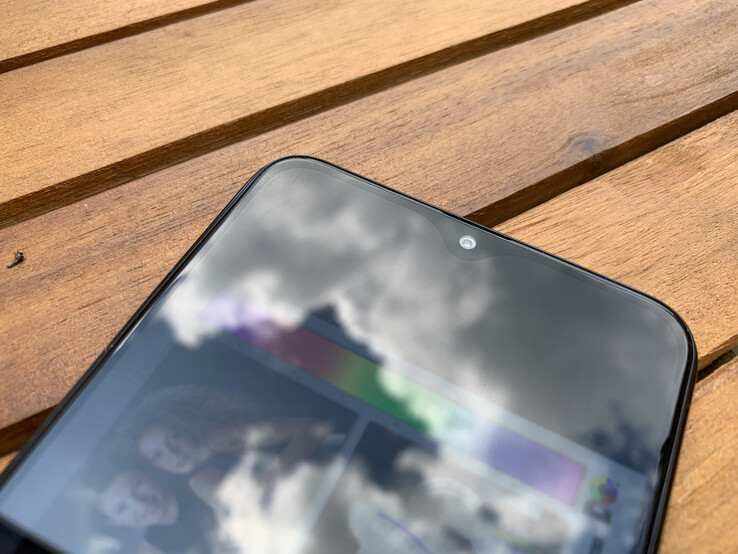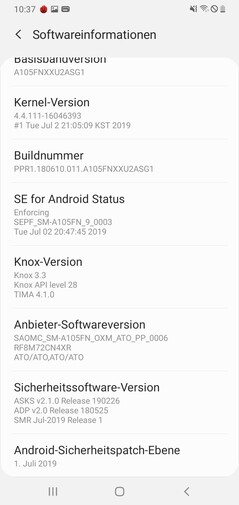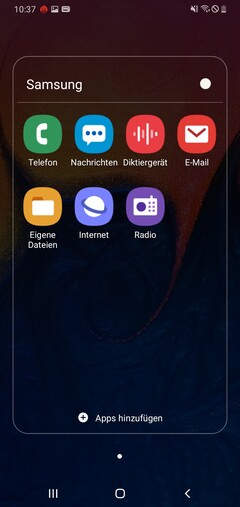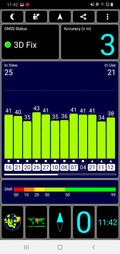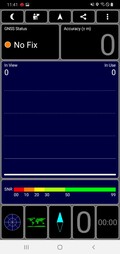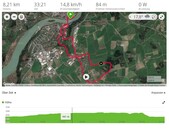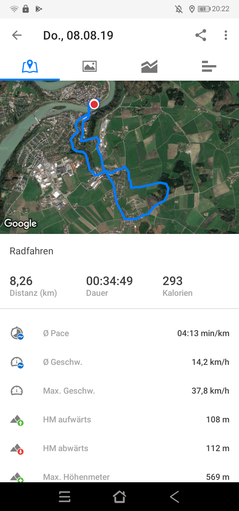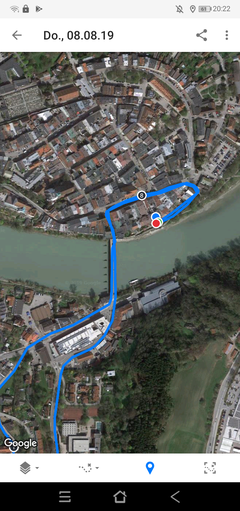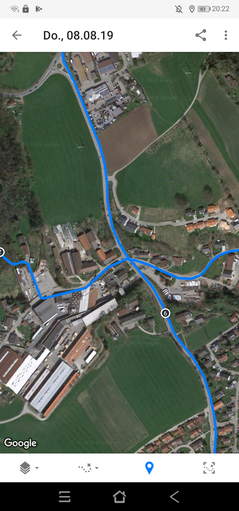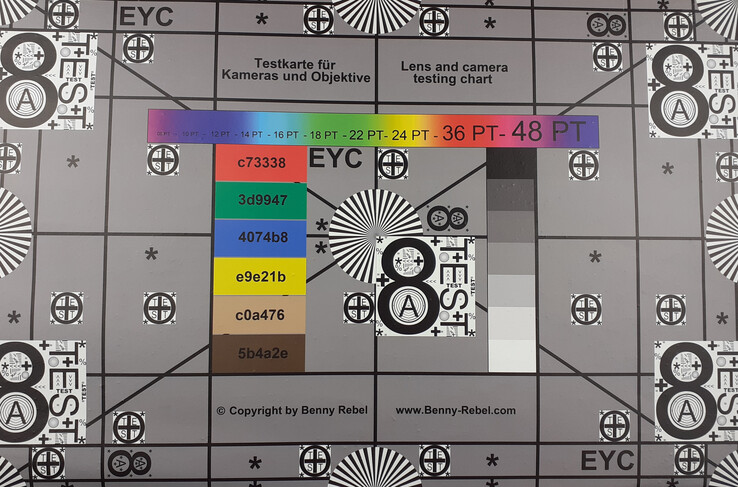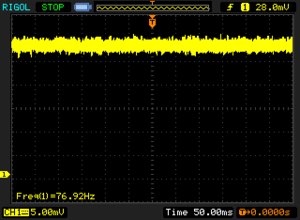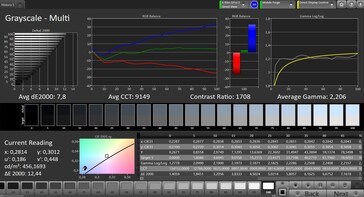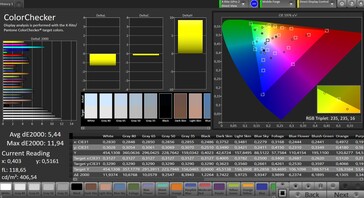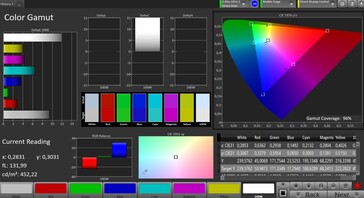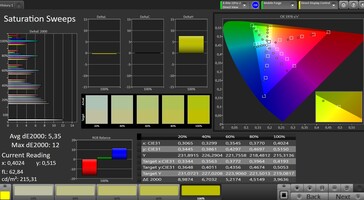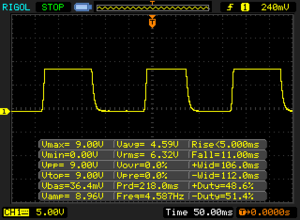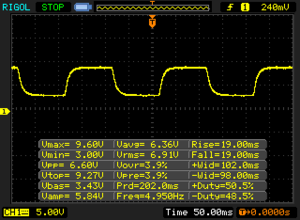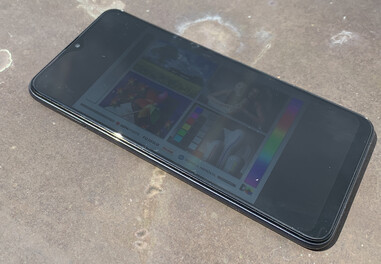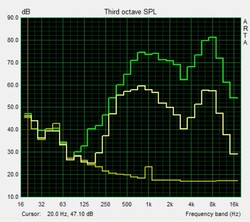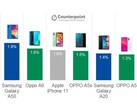Samsung Galaxy A10 Smartphone Review: Power in plastic
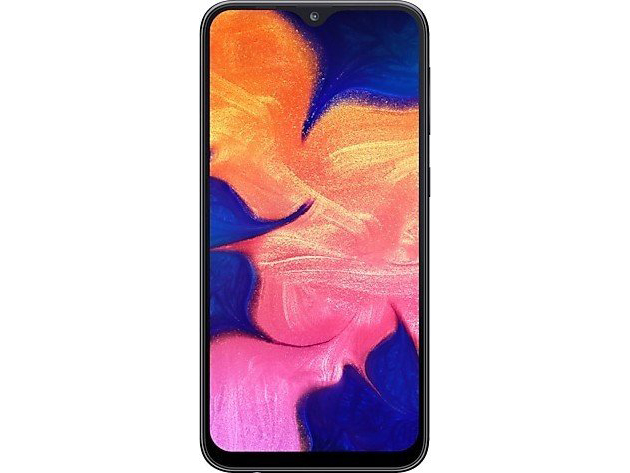
The entry into the Galaxy A series begins with the Galaxy A10, which currently retails for 150 Euros (~US$166). Alternatively, you could save yourself some money by buying the device from third-party retailers online. The Galaxy A10 has a surprisingly current design for a budget smartphone, with its narrow bezels and notched display. Samsung includes 32 GB of storage too, along with 2 GB of RAM, its Exynos 7884B SoC and LTE support. The South Korean company does omit some features found on other comparably priced devices to keep costs down though, which is worth bearing in mind if you are considering the Galaxy A10 as your next smartphone. The Galaxy A10 costs just 30 Euros (~US$33) less than the Galaxy A20e, with the latter seemingly much more lavishly equipped than the former.
In addition to its bigger sibling, we shall compare the Galaxy A10 against the Honor 8A, Huawei Y6 (2019), Nokia 3.2 and Xiaomi Redmi 7. Samsung has already announced the Galaxy A10s too, which has a fingerprint scanner, larger battery and dual rear-facing cameras. However, it is not yet known in which countries the South Korean company plans to sell the device.
Case
The Galaxy A10 looks chic and robust for its price, at least initially. Samsung has opted for a glossy plastic back that comes in blue, dark grey or black. Our blue review unit shimmers in the light, which looks good, but it is also a fingerprint magnet.
The plastic back tapers into the edge, mimicking glass-backed smartphones somewhat. The transitions between materials are smooth and even, which makes the Galaxy A10 look well made. Compounding this is the display, with its narrow bezels and small waterdrop notch.
At 168 grams, the Galaxy A10 is not a light smartphone, but it is also rather large, making its heft appropriate at least. The Galaxy A20e will be a better choice if you prefer something more compact, with the Galaxy A10 and its 6.2-inch display being more suitable for larger hands. Our review unit fits well in ours though, which are not especially big. Its rounded corners make it easier to hold than a more angular phone too.
Connectivity
You cannot get 32 GB of storage anywhere else at this price level, although the 2 GB of RAM that Samsung includes is standard on sub-US$200 devices. Only the Xiaomi Redmi 7 and Galaxy A20e can offer more RAM of our comparison devices, with them both having 3 GB.
Our test device is also in good company with its Wi-Fi 4 support. The Galaxy A10 also supports Bluetooth 5.0, which remains unusual for smartphones at this price.
The Galaxy A10 has a microSD card reader and two SIM card slots, which is impressive. Unfortunately, the device has no brightness sensor, with Samsung considering this superfluous for some reason. We and most other OEMs disagree. Samsung has saved on a notification LED, which is more of a minor gripe.
Software
Conversely, it is good to see Samsung include an up-to-date operating system, namely One UI. The in-house custom version of Android 9 Pie can be found on other Samsung smartphones too, with our review unit having the July set of security patches installed during testing. These were relatively recent, for reference.
One UI incorporates a special feature that allows apps to be copied for use on two user accounts, which can be quite handy for messaging apps, among others. The Galaxy A10 has Widevine Level 1 DRM certification, meaning that it can stream content from the likes of Amazon Prime Video and Netflix in HD.
Samsung preinstalls some in-house apps and a few advertising apps, most of which can be easily uninstalled. There is the standard set of Google apps too.
Communication & GPS
As mentioned earlier, the Galaxy A10 supports Wi-Fi 4, with it averaging around 50 Mb/s in our iperf3 Client Wi-Fi tests with our Linksys EA8500 reference router. Our review unit finished in the midfield of our comparison tables but is well below the class average.
The built-in modem supports 10 LTE bands, which is not enough coverage to consider the Galaxy A10 an intercontinental device. Hence, we would recommend checking whether the Galaxy A10 will work in the country to which you are travelling before you do so. Otherwise, you may find yourself struggling to connect to an LTE network. Incidentally, our review unit maintained decent network reception on the German D2 network with around 3/4 signal strength in urban areas.
| Networking | |
| iperf3 transmit AX12 | |
| Xiaomi Redmi 7 | |
| Nokia 3.2 | |
| Samsung Galaxy A10 | |
| Samsung Galaxy A20e | |
| Huawei Y6 2019 | |
| Honor 8A | |
| iperf3 receive AX12 | |
| Huawei Y6 2019 | |
| Honor 8A | |
| Samsung Galaxy A20e | |
| Samsung Galaxy A10 | |
| Xiaomi Redmi 7 | |
| Nokia 3.2 | |
Our review unit could not locate us indoors, with it taking about 30 seconds to do so outdoors. However, it maintained an accuracy of three metres when it did, which is impressive for a sub-US$200 smartphone. Google Maps worked well outdoors too, but the device lacks a compass, so we could not see the direction in which we were pointing our review unit; another disappointing omission.
We also took the Galaxy A10 on a bike ride to compare its location data with a Garmin Edge 520, our trusty bike computer. Our review unit performed well, but it deviated in tight and tricky sections, as shown in the screenshots below. In short, you can rely on the Galaxy A10 as a navigation tool but not for when you need precise location data.
Please note: Runtastic discontinued from its web services during our testing, which explains the differences between screenshots for this review.
Telephone Features & Call Quality
Samsung preinstalls its in-house phone app, which puts the focus on the keypad. The app operates much like the standard Google one with its tabs for contacts, call history and favourites. Samsung has included a places tab too, should you need help finding a local restaurant, coffee shop or attraction.
The call quality of our review unit over its small earpiece is okay but a bit underwhelming. The person on the other end of the call sounds loud but also dulled and accompanied by a significant amount of background noise. The microphone picks up our voice quite well though, even if we speak a little more quietly. The built-in speaker and hands-free functionality have comparable sound quality to that of the earpiece, with background noise and dulled voices also being the norm.
Cameras
We did not expect more than single front- and rear-facing cameras for a sub-US$200 smartphone and Samsung did not disappoint. The South Korean company equips the Galaxy A10 with a 13 MP rear-facing sensor and a 5 MP front-facing sensor. While the market has moved onto cramming as many lenses as possible into smartphones of all prices, one good lens can often produce better results than multiple lenses, as is the case with the Google Pixel series of smartphones.
The rear-facing camera takes decent photos overall, although they fall short on detail. Sharpness levels could be higher too, while scenes often look overexposed, which is doubly worse considering that the sensor lacks dynamic range. Large areas of homogenous colours contain artefacts upon looking closely, which is a shame. However, the Galaxy A10 takes good pictures for a smartphone in its price range, but we would recommend you look elsewhere if you are an ambitious photographer. In short, the 13 MP rear-facing camera is best suited for the occasional photographer.
The rear-facing camera can also shoot videos in up to 1080p at 30 FPS, with the sensor adjusting exposure levels well in changing lighting conditions. Our review unit did this so well that we hardly noticed it doing so during our test recordings. Colour transitions sometimes look dirty though, which suggests that the device highly compresses video footage. Again, ambitious photographers will quickly get frustrated with its image quality, but it should be good enough for most people who shoot the occasional short video.
The front-facing camera also takes decent pictures, but the sensor often underexposes scenes. Moreover, we noticed image noise dominating many areas, even without looking closely.
We also subjected our review unit to further camera tests under controlled lighting conditions. The rear-facing sensor reproduces colours too palely compared to the ColorChecker Passport reference colour but not horribly so. It did a surprisingly good job of reproducing our test chart, although contrast levels drop off in the corners of the image. Fine structures are disrupted by image noise too.
Accessories & Warranty
Samsung includes a charger, USB cable and headphones in the box, along with the usual set of warranty and legal documents. The South Korean company does not currently sell any Galaxy A10 specific accessories on its website, for reference.
The Galaxy A10 comes with a 24-month manufacturer’s limited warranty. Please see our Guarantees, Return Policies & Warranties FAQ for country-specific information.
Input Devices & Operation
Samsung preinstalls its in-house keyboard app as the default, but you can replace this with others from the Galaxy or Google Play Stores if you prefer. The app works well in our opinion though, so we would recommend trying it before just switching it for Google Gboard.
The hardware buttons feel a bit cheap when pressed, but they sit firmly in their housings. Disappointingly, the Galaxy A10 lacks any form of biometric authentication, with Samsung omitting a fingerprint scanner. You can use 2D face unlock, but this only captures an image of your face using the front-facing camera, which is not as secure as something like Apple Face ID. It cannot be used for high-level security like banking apps or password managers, so it is not a biometric security feature. Instead, you must secure these apps with a password, pattern or PIN.
Display
The Galaxy A10 has a 6.2-inch IPS panel that operates natively at 1520x720. It achieved an average maximum brightness of 430 cd/m² according to X-Rite i1Pro 2 and has a 90% evenly lit backlight. While the former is a little dim compared to the maximum luminosities of the displays in our comparison devices, the omission of a brightness sensor is more unforgivable. Even most budget smartphones support automatic brightness now, so we cannot understand why Samsung has cost-cut here.
| |||||||||||||||||||||||||
Brightness Distribution: 90 %
Center on Battery: 451 cd/m²
Contrast: 2050:1 (Black: 0.22 cd/m²)
ΔE ColorChecker Calman: 5.44 | ∀{0.5-29.43 Ø4.77}
ΔE Greyscale Calman: 7.8 | ∀{0.09-98 Ø5}
90% sRGB (Calman 2D)
Gamma: 2.206
CCT: 9149 K
| Samsung Galaxy A10 IPS, 1520x720, 6.2" | Samsung Galaxy A20e IPS, 1560x720, 5.8" | Honor 8A IPS, 1520x720, 6.1" | Xiaomi Redmi 7 IPS, 1520x720, 6.3" | Huawei Y6 2019 IPS LCD, 1560x720, 6.1" | Nokia 3.2 IPS, 1520x720, 6.3" | |
|---|---|---|---|---|---|---|
| Screen | -16% | -7% | -6% | 2% | -22% | |
| Brightness middle (cd/m²) | 451 | 475 5% | 522 16% | 444 -2% | 487 8% | 415 -8% |
| Brightness (cd/m²) | 430 | 473 10% | 542 26% | 441 3% | 485 13% | 391 -9% |
| Brightness Distribution (%) | 90 | 93 3% | 94 4% | 90 0% | 89 -1% | 86 -4% |
| Black Level * (cd/m²) | 0.22 | 0.35 -59% | 0.47 -114% | 0.45 -105% | 0.35 -59% | 0.55 -150% |
| Contrast (:1) | 2050 | 1357 -34% | 1111 -46% | 987 -52% | 1391 -32% | 755 -63% |
| Colorchecker dE 2000 * | 5.44 | 6.8 -25% | 4 26% | 3.94 28% | 4.3 21% | 4.8 12% |
| Colorchecker dE 2000 max. * | 11.94 | 13.4 -12% | 9.5 20% | 6.72 44% | 10.1 15% | 9.51 20% |
| Greyscale dE 2000 * | 7.8 | 8.7 -12% | 6.6 15% | 4.8 38% | 4.1 47% | 5.7 27% |
| Gamma | 2.206 100% | 2.33 94% | 2.28 96% | 2.294 96% | 2.09 105% | 2.255 98% |
| CCT | 9149 71% | 9385 69% | 7258 90% | 7445 87% | 7312 89% | 7824 83% |
* ... smaller is better
Screen Flickering / PWM (Pulse-Width Modulation)
| Screen flickering / PWM detected | 77 Hz | ≤ 10 % brightness setting | |
The display backlight flickers at 77 Hz (worst case, e.g., utilizing PWM) Flickering detected at a brightness setting of 10 % and below. There should be no flickering or PWM above this brightness setting. The frequency of 77 Hz is very low, so the flickering may cause eyestrain and headaches after extended use. In comparison: 53 % of all tested devices do not use PWM to dim the display. If PWM was detected, an average of 8084 (minimum: 5 - maximum: 343500) Hz was measured. | |||
The display has a comparatively low black value though, which we measured at 0.22 cd/m². This helps the panel achieve an outstanding 2,050:1 contrast ratio, with colours looking as vibrant as they can be on an IPS screen.
Unfortunately, the Galaxy A10 uses pulse-width modulation (PWM) to regulate display brightness at and below 10% brightness. This can cause health issues like headaches and eye strain for some people, with its 77 Hz PWM frequency being low enough to affect those who are PWM sensitive.
Incidentally, the display has decent reaction times for a device at this price. Gamers will not be satisfied though.
Display Response Times
| ↔ Response Time Black to White | ||
|---|---|---|
| 16 ms ... rise ↗ and fall ↘ combined | ↗ 5 ms rise | |
| ↘ 11 ms fall | ||
| The screen shows good response rates in our tests, but may be too slow for competitive gamers. In comparison, all tested devices range from 0.1 (minimum) to 240 (maximum) ms. » 36 % of all devices are better. This means that the measured response time is better than the average of all tested devices (20.2 ms). | ||
| ↔ Response Time 50% Grey to 80% Grey | ||
| 38 ms ... rise ↗ and fall ↘ combined | ↗ 19 ms rise | |
| ↘ 19 ms fall | ||
| The screen shows slow response rates in our tests and will be unsatisfactory for gamers. In comparison, all tested devices range from 0.165 (minimum) to 636 (maximum) ms. » 54 % of all devices are better. This means that the measured response time is worse than the average of all tested devices (31.6 ms). | ||
We give the Galaxy A10 an acceptable pass for outdoors use, as its contrast-rich display somewhat accounts for its low maximum brightness and lack of a brightness sensor. We still do not like having to adjust the display brightness manually though. However, the display will look washed-out and is difficult to read under bright sunlight, as the photo below demonstrates.
Thankfully, the Galaxy A10 has stable viewing angles thanks to the IPS technology used. In short, our test picture looks perfect even at acute viewing angles.
Performance
Samsung equips the Galaxy A10 with an Exynos 7884B, the same in-house SoC as found in the more expensive Galaxy A20e. The octa-core chipset proved to be fast in our Galaxy A20e review, although the Galaxy A10 generally scored less in synthetic benchmarks than its more expensive sibling. The additional 1 GB of RAM that the Galaxy A20e has will make a difference in benchmarks, but not necessarily by 7% as in AnTuTu.
Overall, the Galaxy A10 scores well in synthetic benchmarks, but it also falls short of the Xiaomi Redmi 7 and its Qualcomm Snapdragon 632 SoC. Other smartphones like the Nokia 3.2 and Huawei Y6 (2019) are not a match for the Galaxy A10 though. The latter has a comparatively powerful GPU for its price range too.
| PCMark for Android | |
| Work performance score (sort by value) | |
| Samsung Galaxy A10 | |
| Samsung Galaxy A20e | |
| Honor 8A | |
| Xiaomi Redmi 7 | |
| Huawei Y6 2019 | |
| Nokia 3.2 | |
| Average Samsung Exynos 7884B (6316 - 6902, n=3) | |
| Work 2.0 performance score (sort by value) | |
| Samsung Galaxy A10 | |
| Samsung Galaxy A20e | |
| Honor 8A | |
| Xiaomi Redmi 7 | |
| Huawei Y6 2019 | |
| Nokia 3.2 | |
| Average Samsung Exynos 7884B (5136 - 5309, n=3) | |
| GFXBench 3.1 | |
| on screen Manhattan ES 3.1 Onscreen (sort by value) | |
| Samsung Galaxy A10 | |
| Samsung Galaxy A20e | |
| Honor 8A | |
| Xiaomi Redmi 7 | |
| Huawei Y6 2019 | |
| Nokia 3.2 | |
| Average Samsung Exynos 7884B (14 - 19, n=3) | |
| Average of class Smartphone (11 - 166, n=157, last 2 years) | |
| 1920x1080 Manhattan ES 3.1 Offscreen (sort by value) | |
| Samsung Galaxy A10 | |
| Samsung Galaxy A20e | |
| Honor 8A | |
| Xiaomi Redmi 7 | |
| Huawei Y6 2019 | |
| Nokia 3.2 | |
| Average Samsung Exynos 7884B (6.5 - 8.1, n=3) | |
| Average of class Smartphone (8.4 - 413, n=156, last 2 years) | |
| AnTuTu v7 - Total Score (sort by value) | |
| Samsung Galaxy A10 | |
| Samsung Galaxy A20e | |
| Honor 8A | |
| Xiaomi Redmi 7 | |
| Huawei Y6 2019 | |
| Nokia 3.2 | |
| Average Samsung Exynos 7884B (89089 - 102121, n=3) | |
The Galaxy A10 also sits in the midfield of our browser benchmark comparison tables, with the Galaxy A20e and Xiaomi Redmi 7 being out in front.
Webpages load quickly with the preinstalled Chrome browser. However, you cannot expect the performance of a high-end smartphone, although media content loads quickly for a budget handset.
| Jetstream 2 - 2.0 Total Score | |
| Average of class Smartphone (23.8 - 387, n=148, last 2 years) | |
| Xiaomi Redmi 7 (Chrome 73) | |
| Samsung Galaxy A10 (Chrome 76) | |
| Average Samsung Exynos 7884B (21.5 - 23.4, n=3) | |
| Samsung Galaxy A20e (Chrome 72.0.3626.121) | |
| Huawei Y6 2019 | |
| Nokia 3.2 (Chrome 75) | |
| Honor 8A | |
| Speedometer 2.0 - Result 2.0 | |
| Average of class Smartphone (15.2 - 643, n=121, last 2 years) | |
| Xiaomi Redmi 7 (Chome 73) | |
| Samsung Galaxy A20e (Chrome 72.0.3626.121) | |
| Average Samsung Exynos 7884B (20.7 - 22.2, n=3) | |
| Samsung Galaxy A10 (Chome 76) | |
| Huawei Y6 2019 (Chrome) | |
| Nokia 3.2 (Chome 75) | |
| Honor 8A (Chrome) | |
| WebXPRT 3 - Overall | |
| Average of class Smartphone (38 - 380, n=31, last 2 years) | |
| Xiaomi Redmi 7 (Chrome 73) | |
| Samsung Galaxy A20e (Chrome 72.0.3626.121) | |
| Average Samsung Exynos 7884B (45 - 48, n=3) | |
| Samsung Galaxy A10 (Chrome 76) | |
| Nokia 3.2 (Chrome 75) | |
| Huawei Y6 2019 | |
| Honor 8A (Chrome) | |
| Octane V2 - Total Score | |
| Average of class Smartphone (2228 - 126661, n=196, last 2 years) | |
| Xiaomi Redmi 7 (Chrome 73) | |
| Samsung Galaxy A20e (Chrome 72.0.3626.121) | |
| Average Samsung Exynos 7884B (6921 - 7470, n=3) | |
| Samsung Galaxy A10 (Chrome 76) | |
| Huawei Y6 2019 (Chrome) | |
| Nokia 3.2 (Chrome 75) | |
| Honor 8A (Chrome) | |
| Mozilla Kraken 1.1 - Total | |
| Honor 8A (Chrome) | |
| Nokia 3.2 (Chrome 75) | |
| Huawei Y6 2019 | |
| Samsung Galaxy A10 (Chrome 76) | |
| Average Samsung Exynos 7884B (5546 - 5917, n=3) | |
| Samsung Galaxy A20e (Chrome 72.0.3626.121) | |
| Xiaomi Redmi 7 (Chrome 73) | |
| Average of class Smartphone (257 - 28190, n=156, last 2 years) | |
* ... smaller is better
Games
| Samsung Galaxy A10 | Samsung Galaxy A20e | Honor 8A | Xiaomi Redmi 7 | Huawei Y6 2019 | Nokia 3.2 | Average 32 GB eMMC Flash | Average of class Smartphone | |
|---|---|---|---|---|---|---|---|---|
| AndroBench 3-5 | 2% | -2% | -0% | 2% | -1% | -3% | 1296% | |
| Sequential Read 256KB (MB/s) | 296.4 | 300.4 1% | 265 -11% | 298 1% | 279.3 -6% | 282.4 -5% | 242 ? -18% | 2253 ? 660% |
| Sequential Write 256KB (MB/s) | 101.7 | 103.6 2% | 104 2% | 84.7 -17% | 107.8 6% | 106.3 5% | 100.5 ? -1% | 1878 ? 1747% |
| Random Read 4KB (MB/s) | 73.4 | 79.8 9% | 61 -17% | 73.6 0% | 69 -6% | 35 -52% | 43.1 ? -41% | 298 ? 306% |
| Random Write 4KB (MB/s) | 13.3 | 13.18 -1% | 15 13% | 14.4 8% | 15 13% | 17.5 32% | 22.3 ? 68% | 342 ? 2471% |
| Sequential Read 256KB SDCard (MB/s) | 78.8 ? | 79.2 ? 1% | 81.9 4% | 85.9 ? 9% | 83.2 ? 6% | 87.2 ? 11% | 71.8 ? -9% | |
| Sequential Write 256KB SDCard (MB/s) | 65.3 ? | 64.3 ? -2% | 61.8 -5% | 63.3 ? -3% | 64.4 ? -1% | 65.7 ? 1% | 52.9 ? -19% |
Games
The Galaxy A10 performed well in our gaming tests too, with it averaging 60 FPS in Arena of Valor even on high graphics. More elaborate games like Asphalt 9: Legends, on the other hand, occasionally drop as low as 17 FPS on high graphics. Lowering the graphics to standard results in more stable gameplay though.
The accelerometer and touchscreen worked perfectly during our gaming tests, for reference.
Emissions
Temperature
Surface temperatures peaked at 38.7 °C under load, which will feel warm to the touch but not unpleasantly so. However, most of the device does not reach 35 °C, while all areas remain below 30 °C at idle.
There are also no thermal throttling problems. We subjected our review unit to GFXBench battery tests, with the system consistently achieving the same frame rates regardless of how long we ran the benchmarks.
(+) The maximum temperature on the upper side is 38.7 °C / 102 F, compared to the average of 35.2 °C / 95 F, ranging from 21.9 to 247 °C for the class Smartphone.
(+) The bottom heats up to a maximum of 38.7 °C / 102 F, compared to the average of 34 °C / 93 F
(+) In idle usage, the average temperature for the upper side is 28.7 °C / 84 F, compared to the device average of 32.9 °C / 91 F.
Speakers
Samsung equips the Galaxy A10 with a mono speaker, which it has placed on the back of the device. While the speaker gets loud, reaching a maximum of 86.1 dB(A) during our tests, its positioning is not ideal. Placing the device on any surface, especially soft ones like clothing or soft furnishings, muffles the sound that the speaker produces. Moreover, the speaker overemphasises high-frequencies at high volumes. Lowering the volume slightly creates a more balanced listening experience though. The mono speaker struggles to reproduce bass tones too, but that is the case even with speakers in flagship smartphones.
We would recommend using external audio equipment where possible, which you can connect either via Bluetooth or the 3.5 mm jack. Both methods performed perfectly during our tests.
Samsung Galaxy A10 audio analysis
(+) | speakers can play relatively loud (86.1 dB)
Bass 100 - 315 Hz
(-) | nearly no bass - on average 75.4% lower than median
(+) | bass is linear (0% delta to prev. frequency)
Mids 400 - 2000 Hz
(-) | nearly no mids - on average 75.4% lower than median
(+) | mids are linear (0% delta to prev. frequency)
Highs 2 - 16 kHz
(-) | nearly no highs - on average 75.4% lower than median
(+) | highs are linear (0% delta to prev. frequency)
Overall 100 - 16.000 Hz
(-) | overall sound is not linear (123.3% difference to median)
Compared to same class
» 92% of all tested devices in this class were better, 7% similar, 1% worse
» The best had a delta of 11%, average was 35%, worst was 134%
Compared to all devices tested
» 98% of all tested devices were better, 2% similar, 0% worse
» The best had a delta of 4%, average was 24%, worst was 134%
Samsung Galaxy A20e audio analysis
(±) | speaker loudness is average but good (81.6 dB)
Bass 100 - 315 Hz
(-) | nearly no bass - on average 27.1% lower than median
(±) | linearity of bass is average (9.4% delta to prev. frequency)
Mids 400 - 2000 Hz
(±) | reduced mids - on average 5.8% lower than median
(+) | mids are linear (5.4% delta to prev. frequency)
Highs 2 - 16 kHz
(±) | higher highs - on average 5.7% higher than median
(+) | highs are linear (2.5% delta to prev. frequency)
Overall 100 - 16.000 Hz
(±) | linearity of overall sound is average (24% difference to median)
Compared to same class
» 55% of all tested devices in this class were better, 8% similar, 37% worse
» The best had a delta of 11%, average was 35%, worst was 134%
Compared to all devices tested
» 71% of all tested devices were better, 6% similar, 22% worse
» The best had a delta of 4%, average was 24%, worst was 134%
Power Management
Power Consumption
The Galaxy A10 is less economical than the Galaxy A20e, which is probably because of the former’s much larger screen. Our review unit consumes slightly more than the Galaxy A20e at idle, but the gap widens exponentially under load, with the Galaxy A10 consuming more than all our other comparison devices too. Samsung includes a 5 W charger in the box, but the Galaxy A10 consumed up to 6 W during our tests. Hence, do not expect the device to remain charging if you are pushing it hard.
Overall, the Galaxy A10 finishes in the midfield of our comparison table. While it consumes more than all of our comparison devices under load, it is more efficient at idle, giving it the edge over the Honor 8A, Nokia 3.2 and Xiaomi Redmi 7.
| Off / Standby | |
| Idle | |
| Load |
|
Key:
min: | |
| Samsung Galaxy A10 3400 mAh | Samsung Galaxy A20e 3000 mAh | Honor 8A 3020 mAh | Xiaomi Redmi 7 4000 mAh | Huawei Y6 2019 3020 mAh | Nokia 3.2 4000 mAh | Average Samsung Exynos 7884B | Average of class Smartphone | |
|---|---|---|---|---|---|---|---|---|
| Power Consumption | 22% | -4% | -2% | 17% | -15% | 13% | -22% | |
| Idle Minimum * (Watt) | 0.7 | 0.66 6% | 0.73 -4% | 1 -43% | 0.59 16% | 1 -43% | 0.67 ? 4% | 0.846 ? -21% |
| Idle Average * (Watt) | 1.6 | 1.63 -2% | 2.07 -29% | 1.7 -6% | 1.94 -21% | 1.9 -19% | 1.617 ? -1% | 1.444 ? 10% |
| Idle Maximum * (Watt) | 2 | 1.67 16% | 2.14 -7% | 2.1 -5% | 1.96 2% | 2.8 -40% | 1.777 ? 11% | 1.627 ? 19% |
| Load Average * (Watt) | 5.4 | 2.77 49% | 4.3 20% | 3.3 39% | 2.82 48% | 4 26% | 3.73 ? 31% | 7.04 ? -30% |
| Load Maximum * (Watt) | 6 | 3.66 39% | 5.96 1% | 5.6 7% | 3.57 40% | 5.8 3% | 4.67 ? 22% | 11.3 ? -88% |
* ... smaller is better
Battery Life
Samsung equips the Galaxy A10 with a 3,400 mAh battery, which helped it deliver solid runtimes during our tests. Our review unit lasted longer between charges than the Galaxy A20e, and Huawei Y6 (2019) overall, with the Xiaomi Redmi 7 only able to average a 6% advantage over the Galaxy A20. The Honor 8A lasted slightly longer, especially during our looped H.264 video battery life test, while the Nokia 3.2 managed a 27% longer runtime than our review unit in our Wi-Fi test.
The Galaxy A10 finished in the midfield in our Wi-Fi battery life comparison table, but that should not take anything away from its impressive 12:33-hours runtime. In short, you should expect around two days of regular use between charges, although you may find yourself reaching for the 5 W power brick sooner if you are often taxing the system.
Our review unit takes over two hours to fully recharge with its measly 5 W charger. However, the device supports fast charging like the Galaxy A20e, so you could probably reduce that time if you were to buy a higher wattage charger.
| Samsung Galaxy A10 3400 mAh | Samsung Galaxy A20e 3000 mAh | Honor 8A 3020 mAh | Xiaomi Redmi 7 4000 mAh | Huawei Y6 2019 3020 mAh | Nokia 3.2 4000 mAh | |
|---|---|---|---|---|---|---|
| Battery runtime | -6% | 11% | 6% | -4% | 27% | |
| Reader / Idle (h) | 24.8 | 23.9 -4% | 24.8 0% | |||
| H.264 (h) | 13.4 | 12.6 -6% | 15.3 14% | 15 12% | 13.4 0% | |
| WiFi v1.3 (h) | 12.6 | 11.9 -6% | 13.8 10% | 14.1 12% | 12.2 -3% | 16 27% |
| Load (h) | 4.6 | 4.2 -9% | 5 9% | 4.5 -2% | 4.2 -9% |
Pros
Cons
Verdict
Samsung has made strange decisions in the past when it comes to which features it excludes from its cheap smartphones. The Galaxy A10 is an example of this, with it missing a brightness sensor, compass, notification LED and fingerprint scanner. Other sub-US$200 smartphones have at least some of these features, which makes the Galaxy A10 an even trickier device to recommend to people.
These omissions are unfortunate, as they hamper what is otherwise a decent budget smartphone. Samsung has packed in plenty of power for the money, with the Galaxy A10 even able to play some modern games at 60 FPS. Our review unit manages its surface temperatures well too, while its single rear-facing camera also takes decent-looking pictures. Likewise, it has a reasonably accurate GPS module and a contrast-rich display. Moreover, it is rare to see a budget smartphone ship with Android 9.0 Pie.
The Galaxy A10 offers plenty of power for the money, but Samsung has compromised in too many areas for us to recommend it.
Ultimately, the Galaxy A10 is a solid budget smartphone if you can look past Samsung’s strange decision making. However, the lack of basic features like automatic brightness and a fingerprint sensor may have many people looking elsewhere.
Samsung Galaxy A10
- 10/31/2019 v7 (old)
Florian Schmitt




